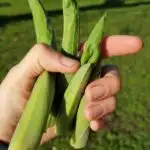
This spring, while you’re out tidying your flower beds, don’t forget to cut a handful of hosta shoots to go with dinner.
Hostas are a classic landscape filler, immediately recognizable by their leaves. But what most folks don’t know, even many hosta owners, is that their shoots are quite tasty. Yes, you can eat hostas!
The Humble Hosta
Let’s be honest with each other: when it comes to notable landscape plants, hostas are kind of boring.
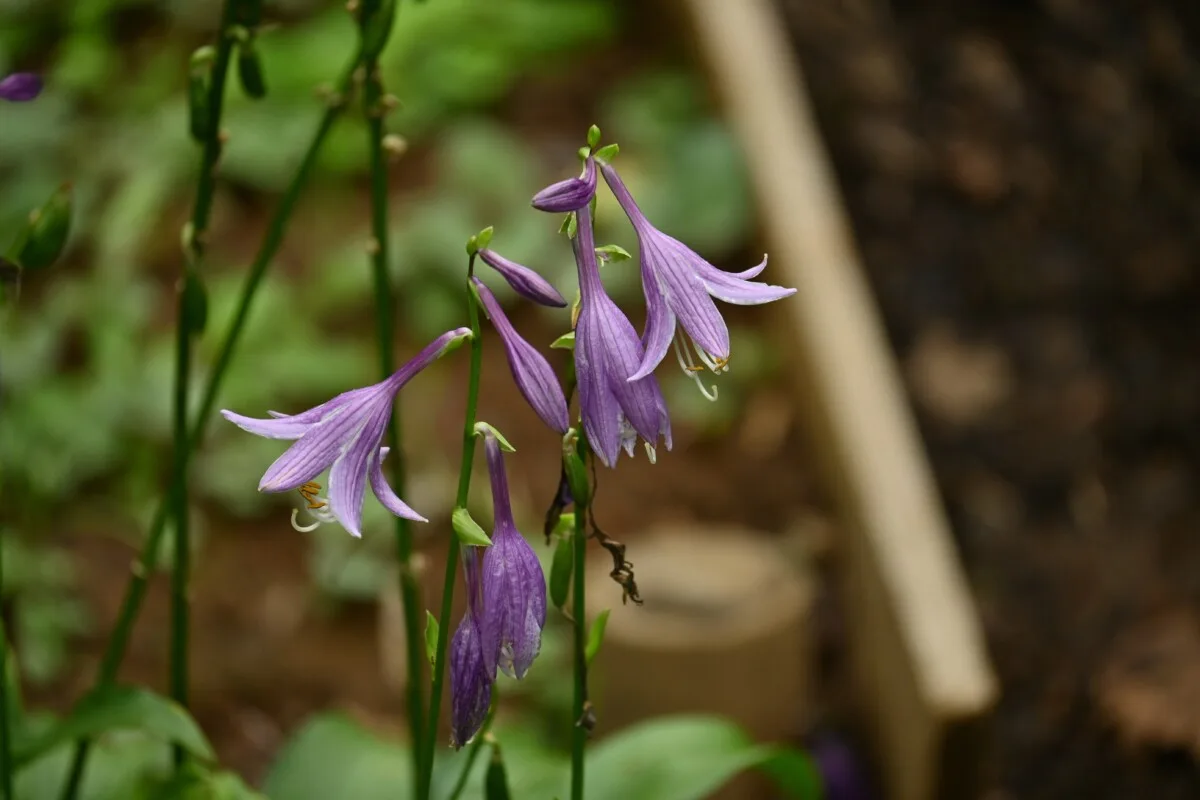
Oh sure, they do their job of filling flower beds and embankments alike with lush, green foliage, but even their flowers are a bit ho-hum. It’s no wonder that no one stops on their morning walk to say, “Ooh, look at Jane’s hostas! Aren’t they incredible? I’ll tell you what, no one grows a hosta like Jane.”
Poor Jane.
Poor Jane’s hostas.
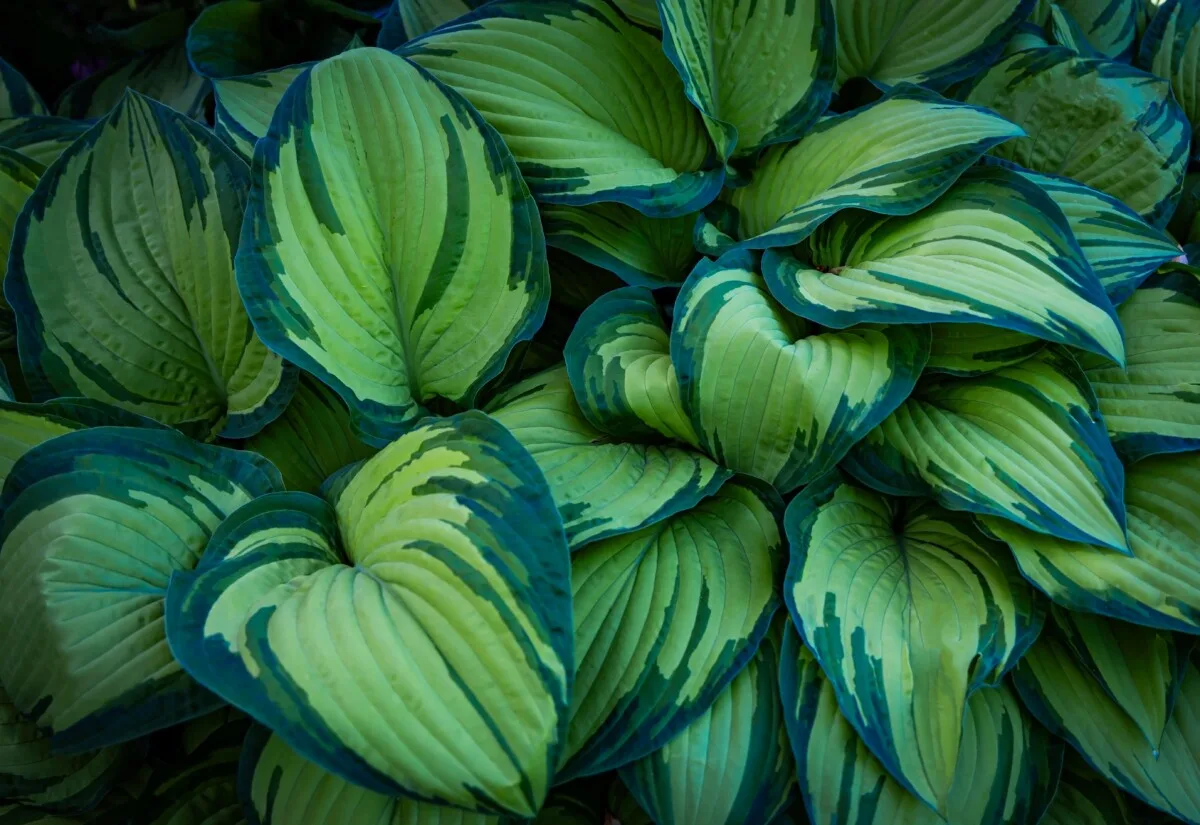
But once you know those tightly curled hosta shoots that pop up each spring are delicious, slightly braised with butter, garlic and a bit of crispy bacon, you may find yourself stopping in your tracks each time you see them.
In fact, once you know you can eat hosta shoots, you start to see them everywhere.
Wait, I Can Eat My Hostas?
Yes, your hostas are edible.
Despite this notion being revolutionary here in the States, eating hosta shoots is quite the norm in Japan. In Japan, they’re called urui, which means snow leaf. (I like that name much better than hosta.) But let’s see if we can normalize munching on these tender landscape favorites each spring here.
Let’s take a closer look at when to harvest hostas, how to store and cook them, and we’ll finish with a quick care guide if you find yourself inspired to grow them.
When to Harvest Hosta Shoots for Maximum Yumminess
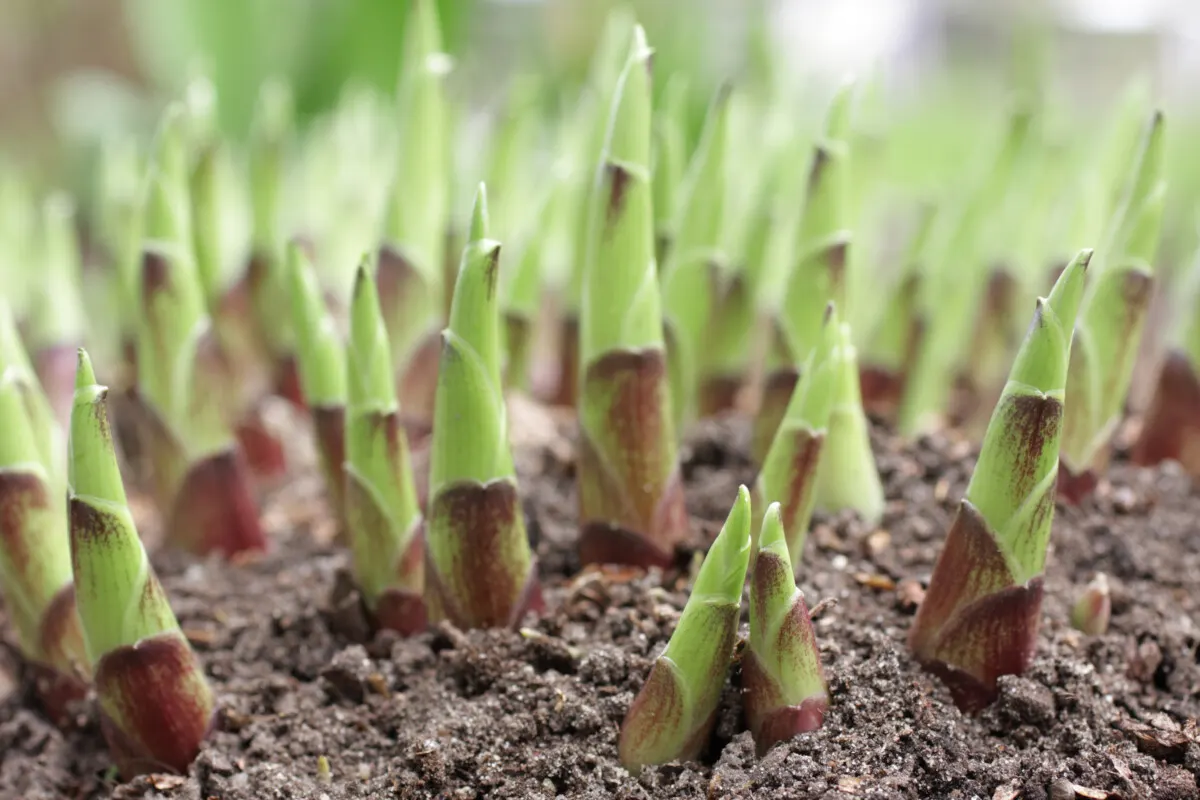
Timing is crucial. You’ll want to aim to pick hostas when they’re still young and tightly furled. So, typically in early spring when they first emerge from the ground. Look for shoots that are about 2 to 4 inches tall and tightly curled, as they are at their peak tenderness and flavor at this stage.
Use a sharp knife to cut the shoots close to the crown of the plant. Or, if you don’t have a knife with you, grasp the shoot firmly at the base and twist from the plant.
Just as when foraging for anything else, be sure to pick only plants that haven’t been treated with chemical pesticides or fertilizers.
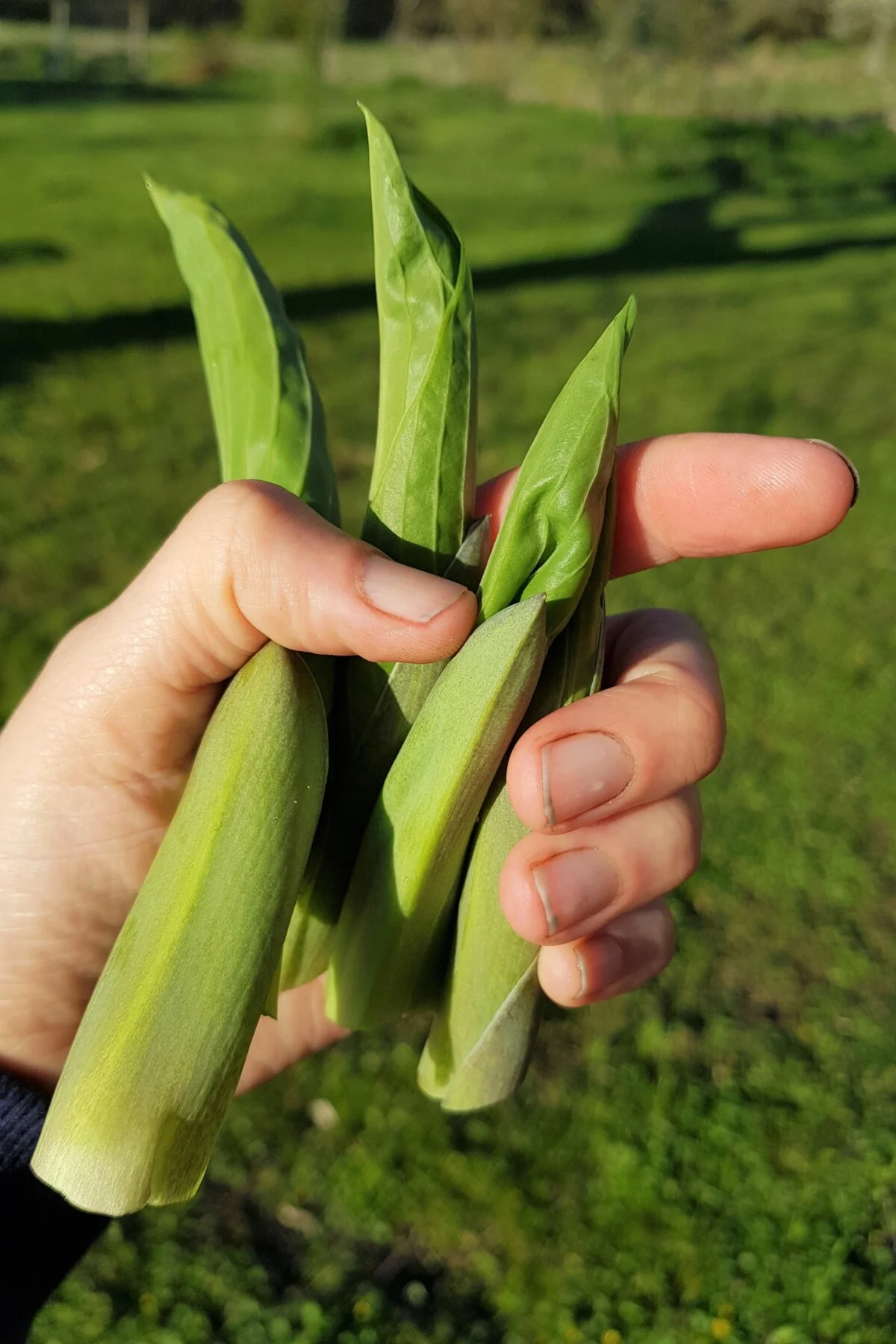
Keeping Your Hostas Fresh
The best way to enjoy hosta shoots is to pick them immediately before you cook them. However, you can store them in the fridge for a few days, wrapped in a damp paper towel and stored in a plastic zip-top bag or other container. Just don’t seal the container all the way. They’ll keep for about a week this way. Keep them in your crisper drawer for the best results.
Cooking Hosta Shoots
Hosta shoots are incredibly versatile in the kitchen. When cooking them, I would suggest using them in the same ways you would asparagus. (Oh my gosh, I just had an idea! I’m going to make cream of hosta soup this spring!) If you’re a foodie and a gardener, you’re going to want to experiment with them in the kitchen.
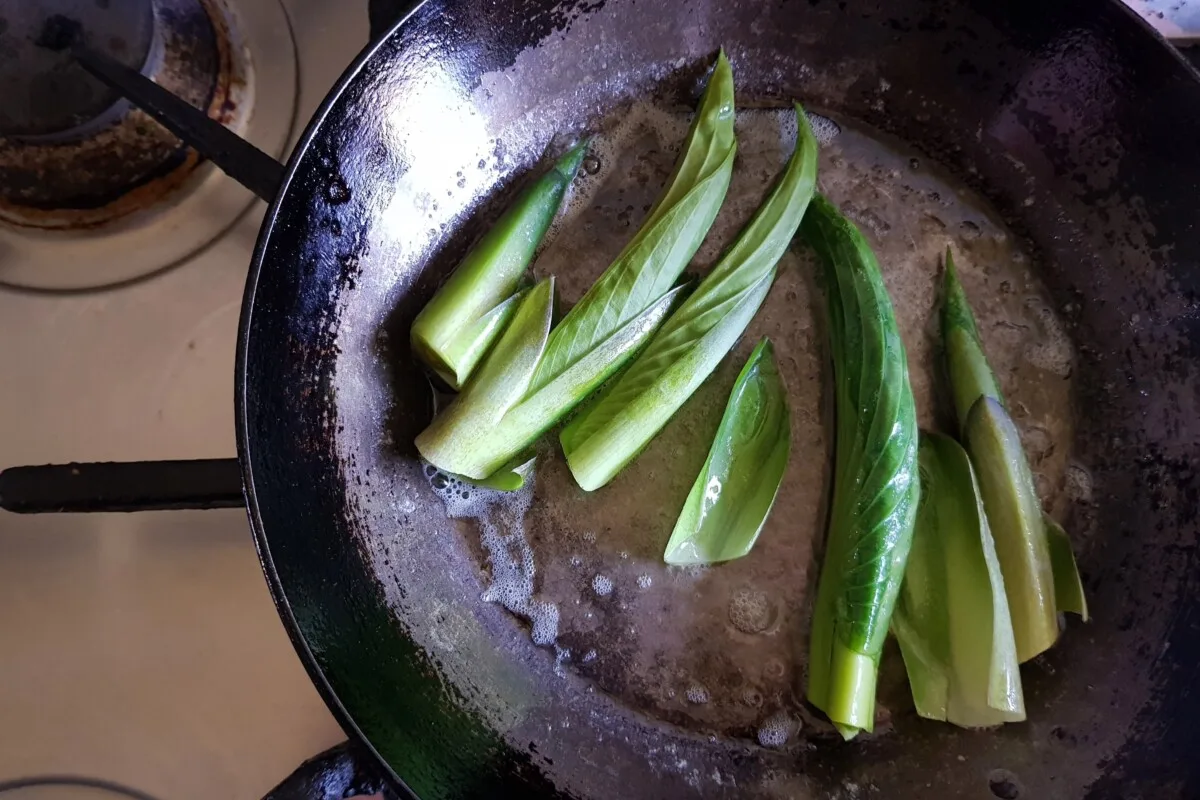
Here are a few recipes to get you started:
Cheesy Roasted Hosta Shoots from Grow with Dr. Joanette
Bacon-Wrapped Hosta Shoots from Learning and Yearning
And finally, Hosta Shoot Kimchi, from Alan Bergo over at Forager|Chef
Okay, Tracey, I’m Kind of Interested in Eating Hosta Shoots, But What Do They Taste Like?
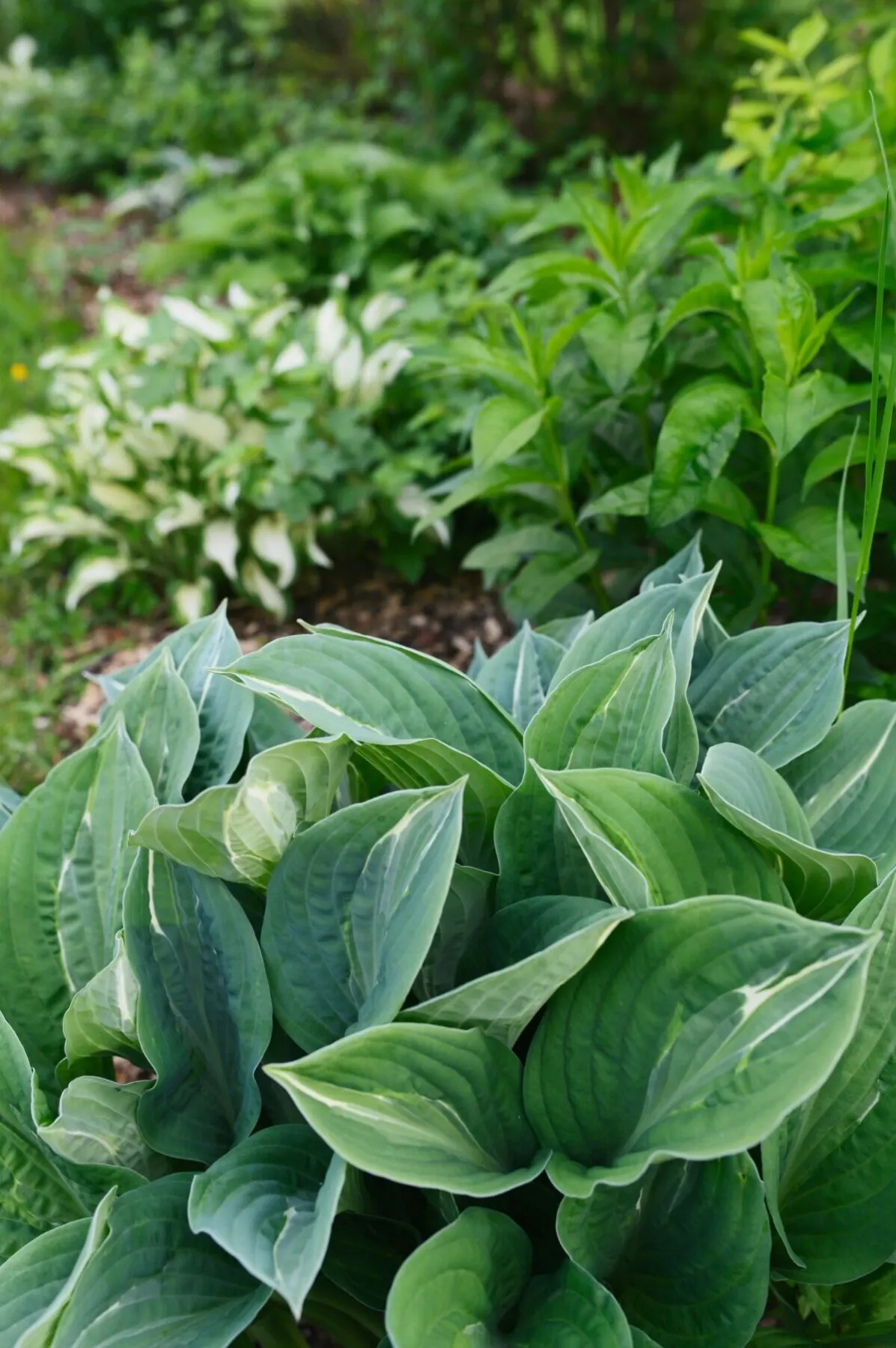
Hosta shoots are mild and slightly sweet. They remind me of a cross between asparagus and buttercrunch lettuce. Their texture is hard to describe as it depends wholly on how you cook them. Done right, they’re tender on the outside while retaining the crisp crunch of a raw green on the inside.
They’re just as good snacked on directly out of the yard as they are sauteed with butter, garlic, salt and pepper.
Will They Grow Back?
But, Tracey, if I cut down my spring hostas and eat them, won’t I be stuck with a bare spot in the yard?
As anyone with a healthy deer or rabbit population nearby will tell you, no.
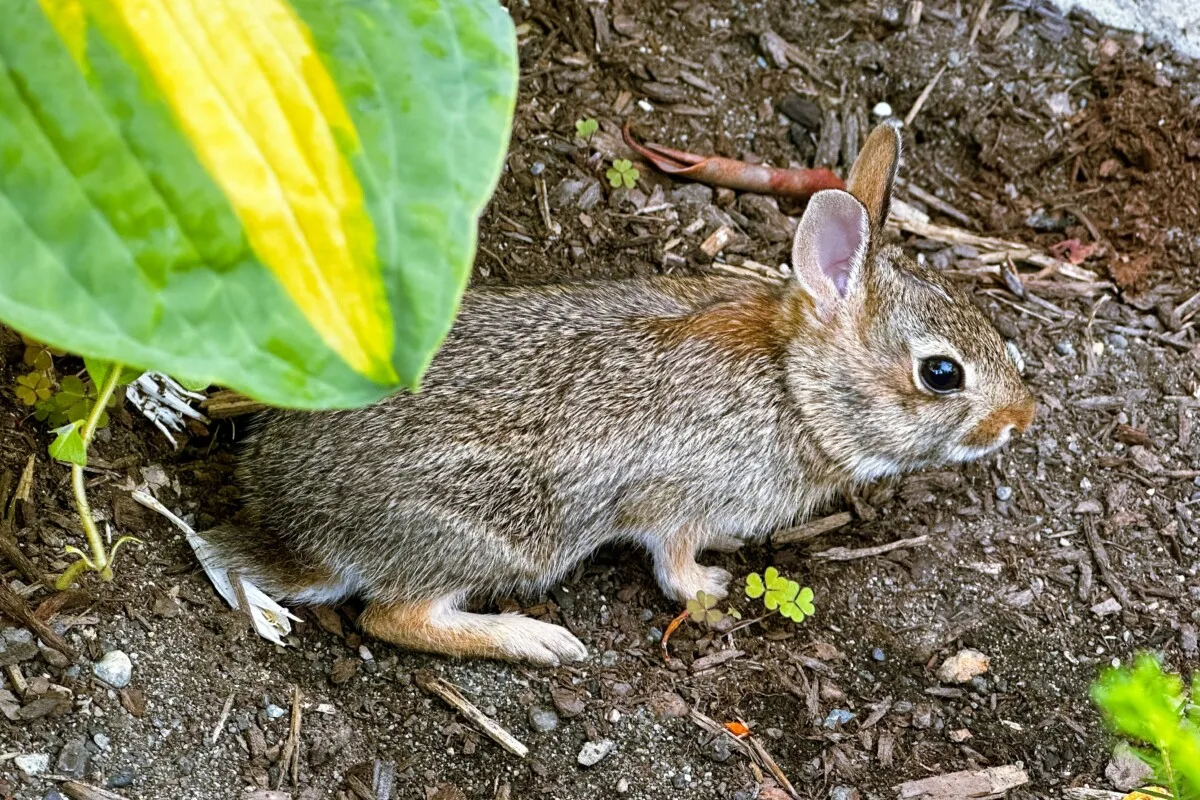
Hostas have a remarkable ability to grow right back after being nibbled on. They can produce new growth throughout the growing season. After harvesting, hostas will continue to send up new shoots, which means you can enjoy several harvests to eat as well as their intended landscaping purpose.
It’s a good idea not to overharvest from one single crown at a time.
Instead, cut a few from several different plants each time. You can encourage new regrowth by giving your hostas plenty of water, sunlight and nutrients. (Or, you know, let spring be spring.)
Spring is the best time of year to forage, in my humble opinion. There are so many good things to eat. Of course, it helps that we’re all so desperate for green food that even stinging nettles sound appealing. (I’m kidding; sauteed nettles with garlic are a favorite spring pizza topping this time of year.)
Why not add hostas to the list?
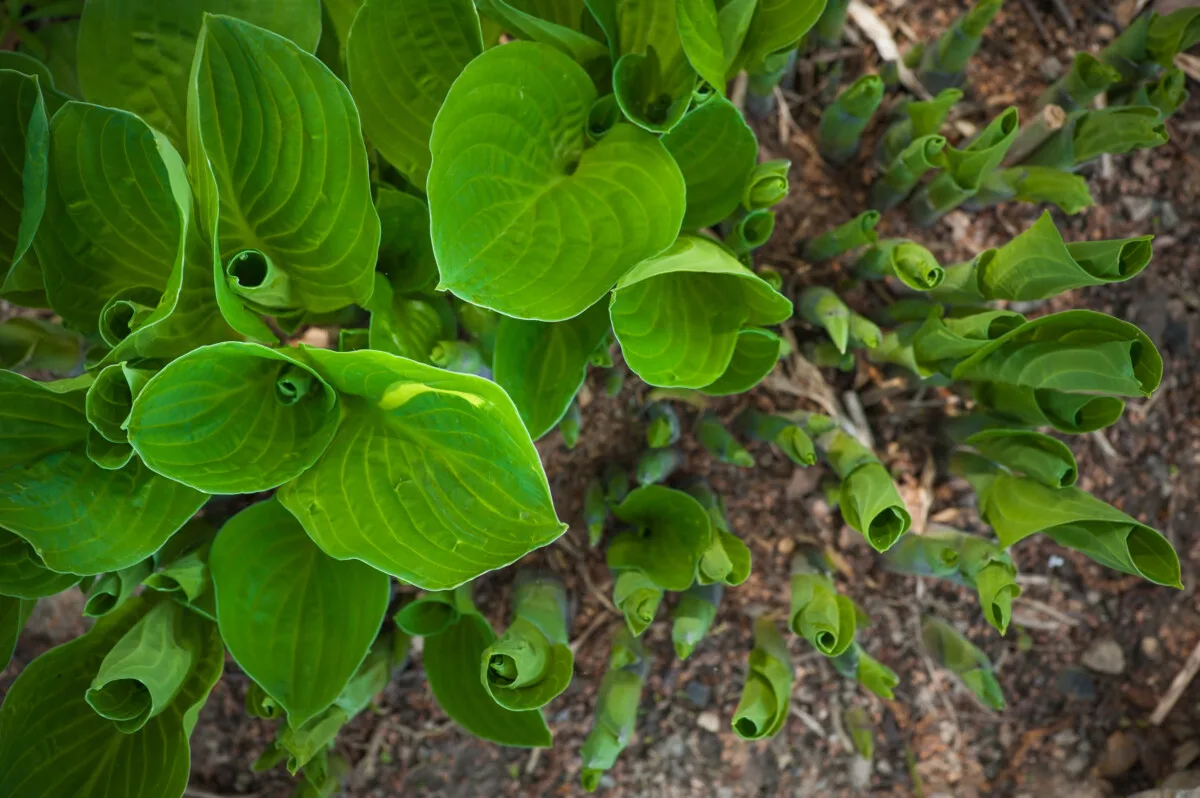
Or, if you have hostas in your yard but you’ve always been a bit nervous about eating something wild, this is a safe and yummy way to dip your toe in the foraging waters. Of course, once you starting eating hostas from your yard, you’ll want to check out fiddleheads, too.
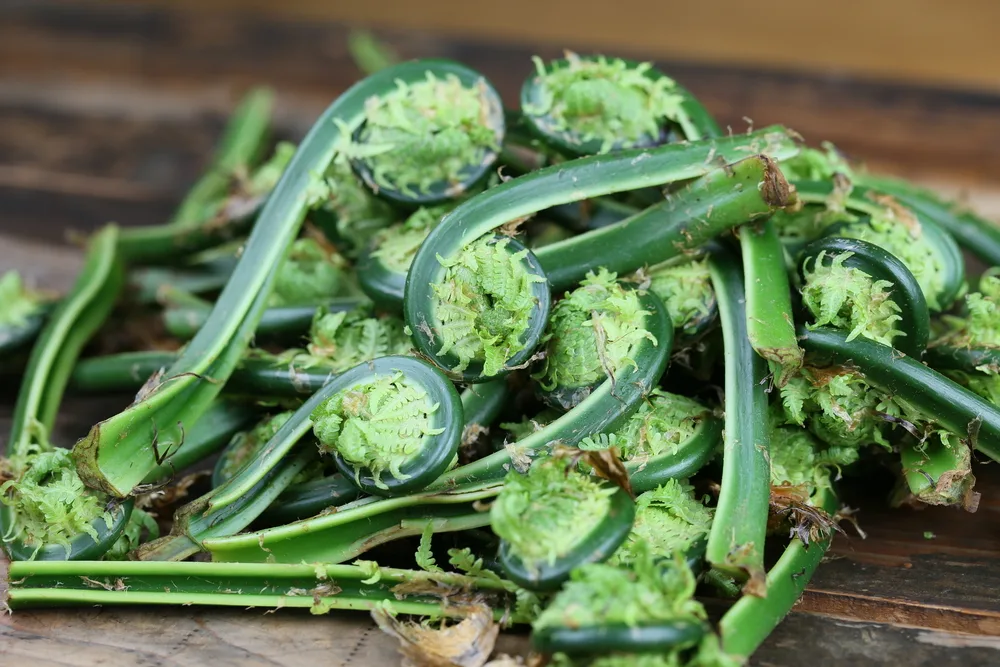
A Quick Hosta Care Guide
Are you eager to try hostas but don’t have any? Do your friends give you odd looks when you ask if you can cut their hosta shoots and eat them? Fear not! There’s a reason you see these plants in everyone’s yard – they’re ridiculously easy to grow.
Hostas are incredibly versatile, thriving in a wide range of climates and growing conditions. They will grow in USDA hardiness zones 3 through 9. If you live in a warmer climate, your hostas may benefit from a little afternoon shade. Conversely, in cooler regions, they can tolerate more sun exposure, although they generally prefer partial to full shade.
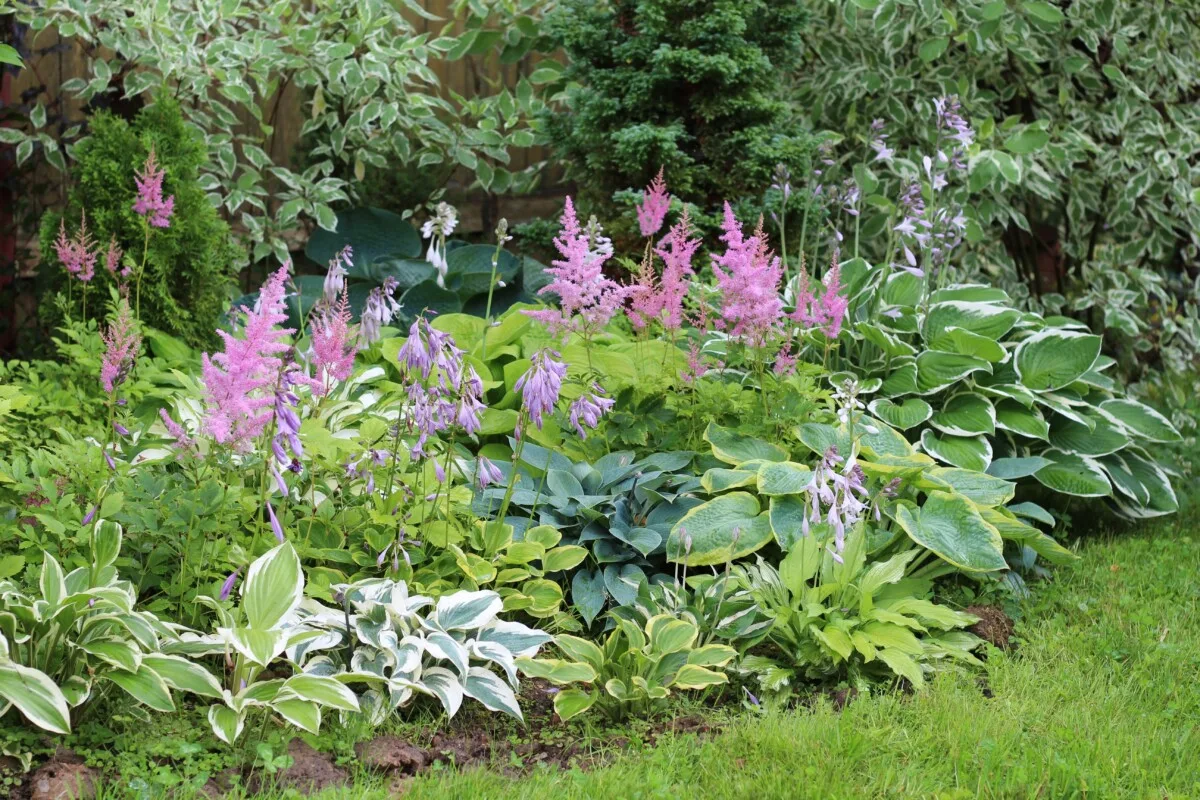
With their broad range of adaptability, it’s no wonder the humble hosta pops up everywhere.
- When planting hostas, choose a location with partial to full shade, as direct sunlight can scorch their delicate leaves. Hostas thrive in well-drained, moist soil rich in organic matter, so amend the planting area with compost or leaf mold to improve the soil.
- Once established, hostas need minimal care. If you have a hot, dry spell, you’ll want to water them. However, a layer of mulch will help retain moisture and suppress competing weeds.
- It’s a good idea to test the soil each year to see if your hostas need fertilizer. A balanced fertilizer will produce beautiful leaves as well as flowers.
- Throughout the growing season, remove faded or damaged leaves to keep them tidy and encourage airflow.
Hostas are easy to care for and will reward you with lush foliage, graceful blooms and a culinary treat each spring, year after year.

Get the famous Rural Sprout newsletter delivered to your inbox.
Including Sunday musings from our editor, Tracey, as well as “What’s Up Wednesday” our roundup of what’s in season and new article updates and alerts.


